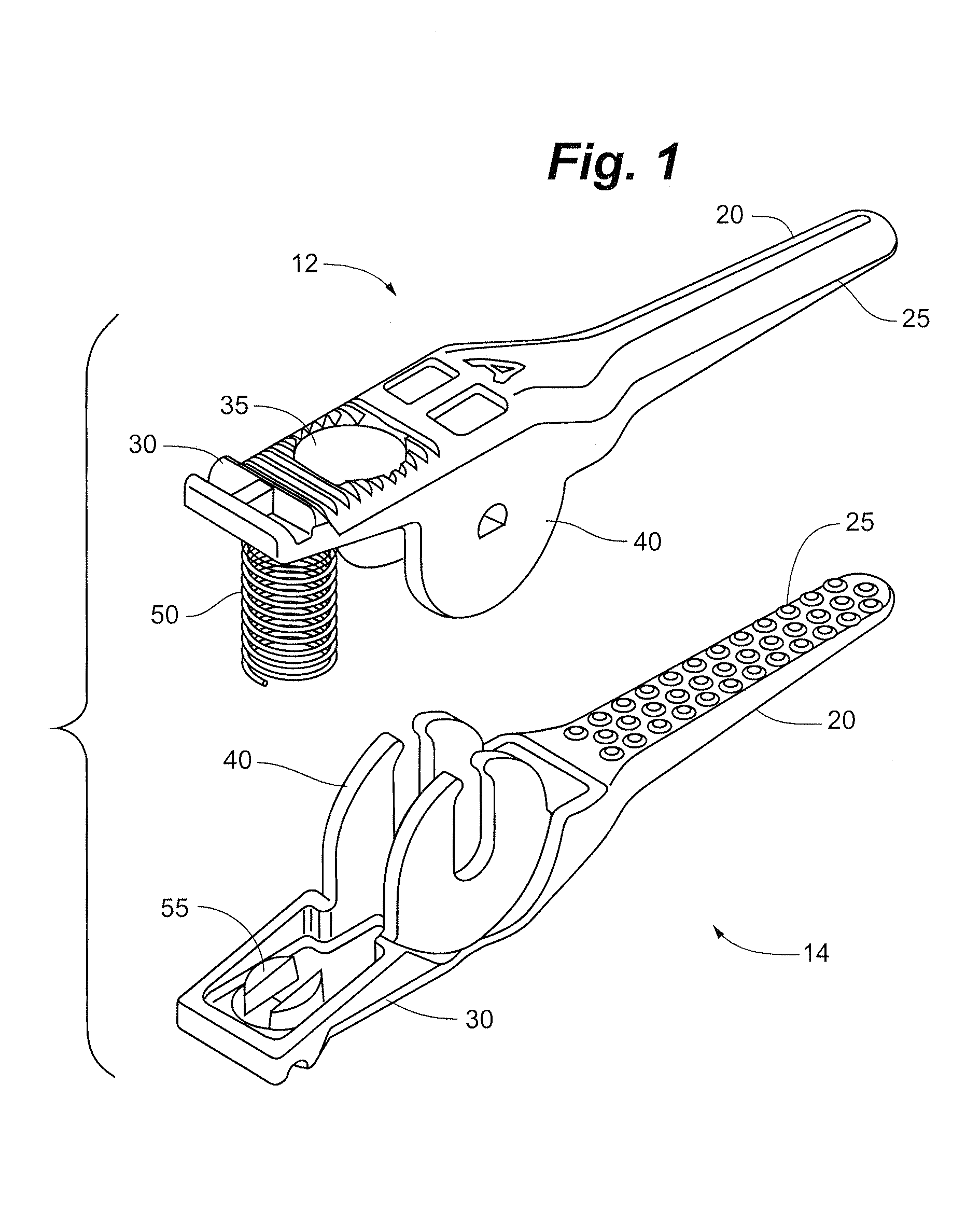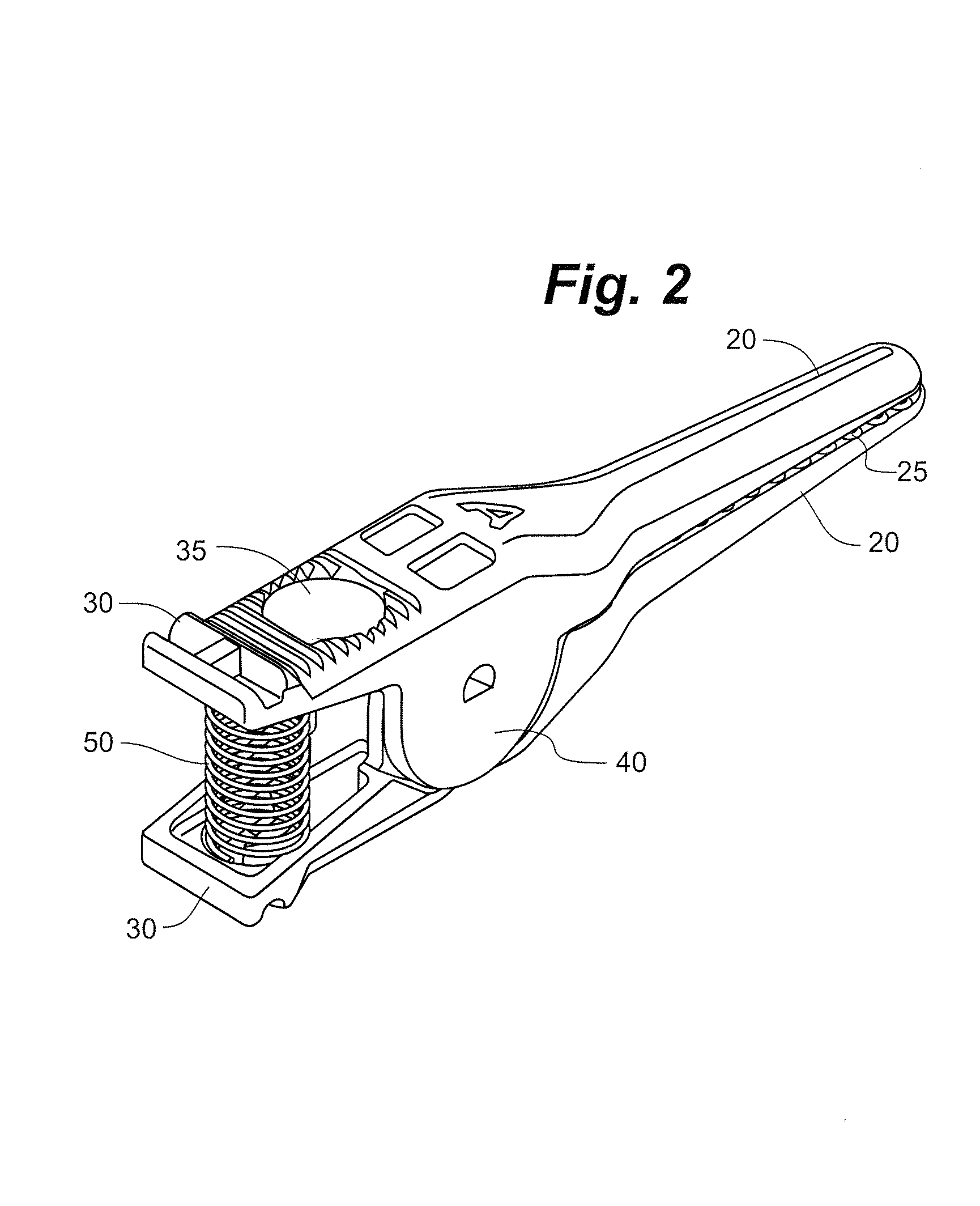Vascular clamp
a technology of microvascular clamps and clamps, which is applied in the field of microvascular clamps, can solve the problems of permanent occlusion or traumatic damage of the vessel, damage to the vessel, pinching and crushing effect of the vessel, etc., and achieves the effect of optimizing the occlusion of the vessel, minimizing the trauma to the vessel, and uniform closing for
- Summary
- Abstract
- Description
- Claims
- Application Information
AI Technical Summary
Benefits of technology
Problems solved by technology
Method used
Image
Examples
Embodiment Construction
[0023]With reference to the FIGS. 1–9, the preferred embodiments of the vascular clamp will now be described.
[0024]The preferred vascular clamp includes two clamp members, 12 and 14. Each clamp member includes a handle 30, a pivoting point 40 and a jaw 20. FIGS. 1 and 3 show the clamp members in an unconnected form. FIGS. 2 and 4 show the clamp members in a connected form. The clamp members are connected together at their pivoting point 40.
[0025]The handles are adapted to be held by forceps or by hand (for example by fitting a user's thumb and forefinger). Each handle 30 also includes a handle surface 35. In some embodiments, the handle surface 35 is formed as a non-slip surface. The non-slip surface can have any suitable configuration to prevent slippage. For example, the surface can include grooves or ribs or the surface can be sandblasted to form a rougher surface having better gripping. The non-slip surface also makes it easier to grasp the handles during the slippery conditions...
PUM
 Login to View More
Login to View More Abstract
Description
Claims
Application Information
 Login to View More
Login to View More - R&D
- Intellectual Property
- Life Sciences
- Materials
- Tech Scout
- Unparalleled Data Quality
- Higher Quality Content
- 60% Fewer Hallucinations
Browse by: Latest US Patents, China's latest patents, Technical Efficacy Thesaurus, Application Domain, Technology Topic, Popular Technical Reports.
© 2025 PatSnap. All rights reserved.Legal|Privacy policy|Modern Slavery Act Transparency Statement|Sitemap|About US| Contact US: help@patsnap.com



